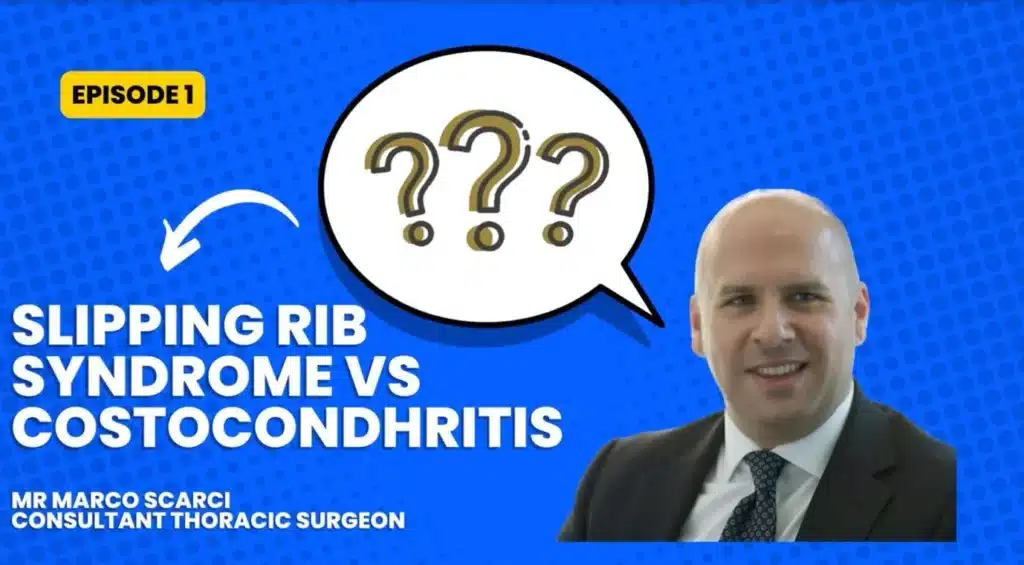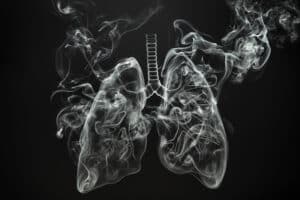Slipping Rib Syndrome vs Costochondritis:
Slipping rib syndrome and costochondritis are two different conditions that can cause chest pain:
Slipping rib syndrome is when one or more ribs slip out of place or become misaligned. This can cause tenderness, pain, and discomfort in the chest and upper abdomen.
Costochondritis, conversely, is an inflammation of the cartilage that connects the ribs to the breastbone. It can cause sharp pain and tenderness in the chest area, especially when taking deep breaths or coughing, which can be confused with a heart attack.
While both conditions can cause chest pain, they have different causes and treatments. Slipping rib syndrome may require manipulation or surgery to realign the ribs, while costochondritis can often be treated with pain relievers and rest. It is important to talk to your doctor if you are experiencing chest pain to determine the underlying cause and the appropriate treatment plan.
Is slipping rib syndrome the same as costochondritis?
No, slipping rib syndrome and costochondritis are not the same conditions. While both conditions can cause chest pain and discomfort, they have different causes and treatments.
What can be mistaken for slipping rib syndrome?
Many conditions can be mistaken for slipping rib syndrome, including:
1. Intercostal muscle strain or sprain
2. Costochondritis (inflammation of the cartilage that connects a rib to the breastbone)
3. Thoracic outlet syndrome (compression of nerves or blood vessels in the shoulder region)
4. Tietze syndrome (a rare disorder that causes swelling and pain in the cartilage of the ribcage)
5. Herniated disc or spinal misalignment in the upper back
6. Gastroesophageal reflux disease (GERD)
These conditions can cause pain in the chest or upper back that may be similar to the symptoms of slipping rib syndrome. So, it is important to diagnose the condition to receive the correct treatment.
Does slipping rib syndrome show up on an X-ray?
Unfortunately, for many, slipped rib syndrome may go undiagnosed for years. The degeneration of the surrounding cartilage around a rib does not show up on an X-ray, MRI, or CT scan. The area of the pain is symptomatic for other common ailments, too.
How do you test for a slipped rib?
A slipped rib, also known as a rib subluxation or rib displacement, is usually diagnosed by a physical examination by a healthcare professional. However, imaging tests like X-rays, MRI scans, or CT scans may be ordered to rule out other possible conditions. During the physical examination, the healthcare professional may apply pressure on the affected area and ask the patient to take a deep breath. They may also ask the patient to bend, twist, or rotate to see if they experience pain or discomfort.
If a slipped rib is suspected, the healthcare professional may perform a manoeuvre called a “hooking manoeuvre” that involves pushing the rib upwards. If the pain is immediately experienced with this manoeuvre, the diagnosis of a slipped rib is confirmed. It is important to seek medical attention if you suspect you have a slipped rib, as it can cause significant pain and discomfort if left untreated.
How do doctors fix a slipped rib?
Treatment for a slipped rib typically involves manual manipulation or adjustments by a healthcare provider, such as a chiropractor or osteopath. The provider will use their hands to push the affected rib back into its proper position gently.
The patient may also be advised to take pain medication or anti-inflammatory medication, perform gentle exercises or stretches to relieve pain and tension in the affected area, and use heat or ice therapy to help reduce swelling and promote healing. In severe cases, surgery may be necessary to reposition and stabilize the slipped rib, although this is rare.
Is slipping rib serious?
While slipping rib syndrome can be painful and uncomfortable, it is generally not considered serious or life-threatening. Treatment options for slipping rib syndrome include rest, anti-inflammatory medications, and physical therapy. In some cases, surgery may be necessary to correct the condition.
However, it is important to note that if you are experiencing symptoms of slipping rib syndrome, it is still best to consult with a medical professional for an accurate diagnosis and appropriate treatment.
Can slipping rib cause stomach problems?
Yes, slipping rib syndrome can cause stomach problems. This syndrome happens when the cartilage that connects the lower ribs to the breastbone slips. This can cause pain in the ribs and upper abdomen and digestive symptoms like indigestion, bloating, and constipation. If you are experiencing these symptoms, seeing a doctor for an accurate diagnosis and treatment plan is best.
Can anxiety cause slipping rib syndrome?
There is limited research on the relationship between anxiety and slipping rib syndrome, also known as clicking rib syndrome or rib tip syndrome. However, anxiety can contribute to a number of physical symptoms, including muscle tension and chest pain. These symptoms can potentially aggravate or worsen slipping rib syndrome and other conditions that affect the ribs.
Do you need surgery for slipping rib syndrome?
The treatment for slipping rib syndrome depends on the severity of the symptoms. In mild cases, simple measures such as rest, pain management, and posture improvement may be enough to alleviate the symptoms. However, in severe cases, surgery may be necessary to remove the affected ribs or to stabilize the slipped rib. If you think you may be suffering from slipping rib syndrome, it is best to consult with an experienced surgeon to determine the most appropriate treatment plan for your individual situation.









